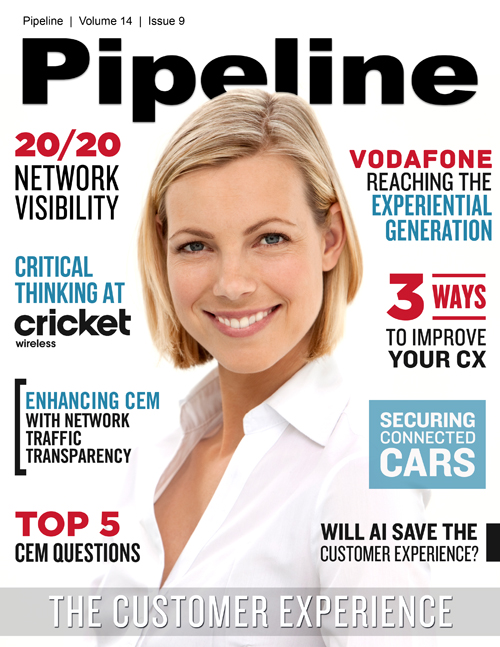20/20 Network Visibility
The momentum behind software-defined networking deepens the waters and causes additional waves of data disruption. Even if you could apply hand-crafted rules in such a dynamic landscape, it would take droves of hard-to-find, highly trained individuals with years of domain-specific experience to effectively manage it. Not only is this inefficient, it’s cost prohibitive, prone to human error, and still restricted by the limitations of human capacity.
“Hand-crafting rules no longer works in a software-defined networking environment,” commented Thummalapalli. “There is a much higher requirement for automation and pattern matching to understand what the data is telling you. It needs to happen in real time, and this goes beyond human speed and capacity. More and more of our customers, both large and small, are coming to us for those predictive, pattern-matching models.”
Perhaps at the pinnacle of software-defined networks is self-organizing networks (SON), and SON is a key enabler of next-generation networks. SON has already proven itself and is being used
widely to automate many aspects of network management, performance and coverage. However, as 5G deployments continue to pick up momentum, SON becomes a mission-critical component. 5G networks
rely on small cells due to the poor building penetration properties of 5G millimeter wavelength frequencies. Small cell deployments, particularly in hybrid network scenarios, will require a high
degree of automation using SON that can leverage environmental and situational data from service assurance systems. In addition, many future 5G use cases will depend on zero latency and
mission-critical connectivity where there is no room for fault, human error, or time for human intervention.
Teaching machines
Artificial intelligence (AI) and machine learning provide a viable solution to contend with the complexity of software-defined networks and the massive amounts of data being generated by the proliferation of new system, application, network, and third-party information sources. But first, it must be taught.
“AIs and machine-learning systems are like children. They must be taught what to do, and told what not to do,” said Thummalapalli.
In a machine-learning environment, the human role becomes one of a teacher-parent to that of the machine-child. How children and systems develop is largely dependent on a combination of environment, nurturing, and genetics. In the machine-learning world, this can be defined as the data sets, user-guided learning, and the pre-defined models, patterns, and actions with which the system has been designed.
Thummalapalli explains that gen-E takes a unique approach to this, not by breaking down or attempting to integrate data or system silos, but by embracing the data within each separately. To do this, the gen-E OpsCenter solution contains two integral components. OpsCenter Search consumes data from a variety of data sources to provide a complete, holistic view. It can also collect, compare and contextualize disregarded data and understand the difference between it and current data sets. Additionally, OpsCenter Search can create the foundation for analytics-driven service assurance. Now with a complete, contextual view of all data in a central platform, The OpsCenter Machine Learning component possesses the models to identify patterns and automate actions that can be taken to resolve known issues.
The third component and final component, the human role, shifts to nurture the platform so that it can become increasingly independent. The expertise grows within the system, not the human, lowering staffing requirements. Over time, an increasing number of issues can be resolved without error through automated pattern matching, which increases operational efficiency and improves quality of service. As a result, humans can then spend their time contemplating how to leverage additional data sources to improve network performance and enhance new service offerings.
Listen to your networks
Networks are noisy, but it’s important you listen to them. Big Data is only getting bigger and human speed and capacity has its limitations. The push to software-defined networking is making matters worse, as more network functions are hosted in datacenter environments. Hand-crafting can’t and won't keep up. We have reached our limits and must adapt to continue to thrive in the data-driven world.
Excluding data also no longer works. We must embrace all data to gain a more perfect picture. We need systems that can learn from us so that they can work for us. Our focus needs to shift to raising systems that can grow, consume and rationalize all data from all data sources. These systems can become increasingly independent, automated and sophisticated over time – so that we can spend less time dealing with data and more time being human.



















